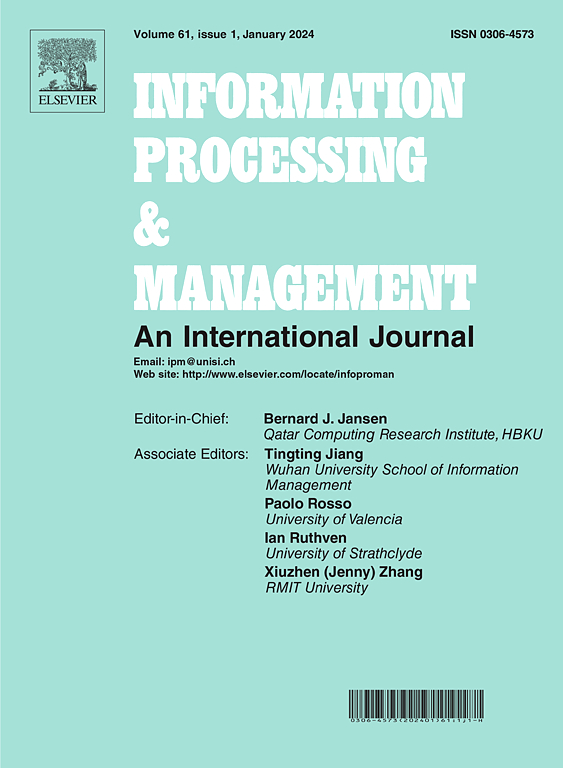Considering dual-followers to dynamically model and analyze online rumor propagation
IF 7.4
1区 管理学
Q1 COMPUTER SCIENCE, INFORMATION SYSTEMS
引用次数: 0
Abstract
Online rumor propagation poses significant challenges to social stability and public security. Previous studies have overlooked the behavioral differences and impacts between active and passive spreaders in the rumor propagation. To address this gap, we propose a novel Dual-Followers–Susceptible–Observer–Infective–Counter–Recovery model (DF-SIOCR), which simultaneously incorporates the followers of rumor-spreading and those of rumor-countering, providing a more fine-grained framework for analyzing online rumor propagation. In the model analysis, we calculate the basic reproduction number, three equilibrium points of the new model, and analyze the stability of these equilibrium points. In the experiments, we analyze the influence of several key parameters on online rumor propagation and conduct simulations on three different network structures to validate the model’s efficacy across diverse social networks. Finally, the comparative experiments are conducted on five public rumor events. Experimental results show that the DF-SIOCR model exhibits superior performance in R-squared, RMSE, and MAE, significantly outperforming existing approaches. These results indicate the model’s high accuracy in predicting rumor propagation trends and strong adaptability to complex dissemination scenarios. This work not only advances theoretical understanding of rumor propagation dynamics but also provides actionable insights for developing effective rumor governance strategies.
考虑双追随者对网络谣言传播进行动态建模和分析
网络谣言传播对社会稳定和公共安全构成重大挑战。以往的研究忽略了主动传播者和被动传播者在谣言传播中的行为差异和影响。为了解决这一差距,我们提出了一种新的双追随者-易感者-观察者-感染者-反恢复模型(DF-SIOCR),该模型同时包含了谣言传播的追随者和谣言反击的追随者,为分析在线谣言传播提供了一个更细粒度的框架。在模型分析中,我们计算了新模型的基本再现数和三个平衡点,并分析了这些平衡点的稳定性。在实验中,我们分析了几个关键参数对网络谣言传播的影响,并在三种不同的网络结构上进行了仿真,以验证模型在不同社会网络中的有效性。最后,对五种公众谣言事件进行了对比实验。实验结果表明,DF-SIOCR模型在r平方、RMSE和MAE方面表现出优异的性能,显著优于现有的方法。结果表明,该模型预测谣言传播趋势的准确性高,对复杂传播场景的适应性强。这项工作不仅推进了对谣言传播动力学的理论认识,而且为制定有效的谣言治理策略提供了可操作的见解。
本文章由计算机程序翻译,如有差异,请以英文原文为准。
求助全文
约1分钟内获得全文
求助全文
来源期刊

Information Processing & Management
工程技术-计算机:信息系统
CiteScore
17.00
自引率
11.60%
发文量
276
审稿时长
39 days
期刊介绍:
Information Processing and Management is dedicated to publishing cutting-edge original research at the convergence of computing and information science. Our scope encompasses theory, methods, and applications across various domains, including advertising, business, health, information science, information technology marketing, and social computing.
We aim to cater to the interests of both primary researchers and practitioners by offering an effective platform for the timely dissemination of advanced and topical issues in this interdisciplinary field. The journal places particular emphasis on original research articles, research survey articles, research method articles, and articles addressing critical applications of research. Join us in advancing knowledge and innovation at the intersection of computing and information science.
 求助内容:
求助内容: 应助结果提醒方式:
应助结果提醒方式:


